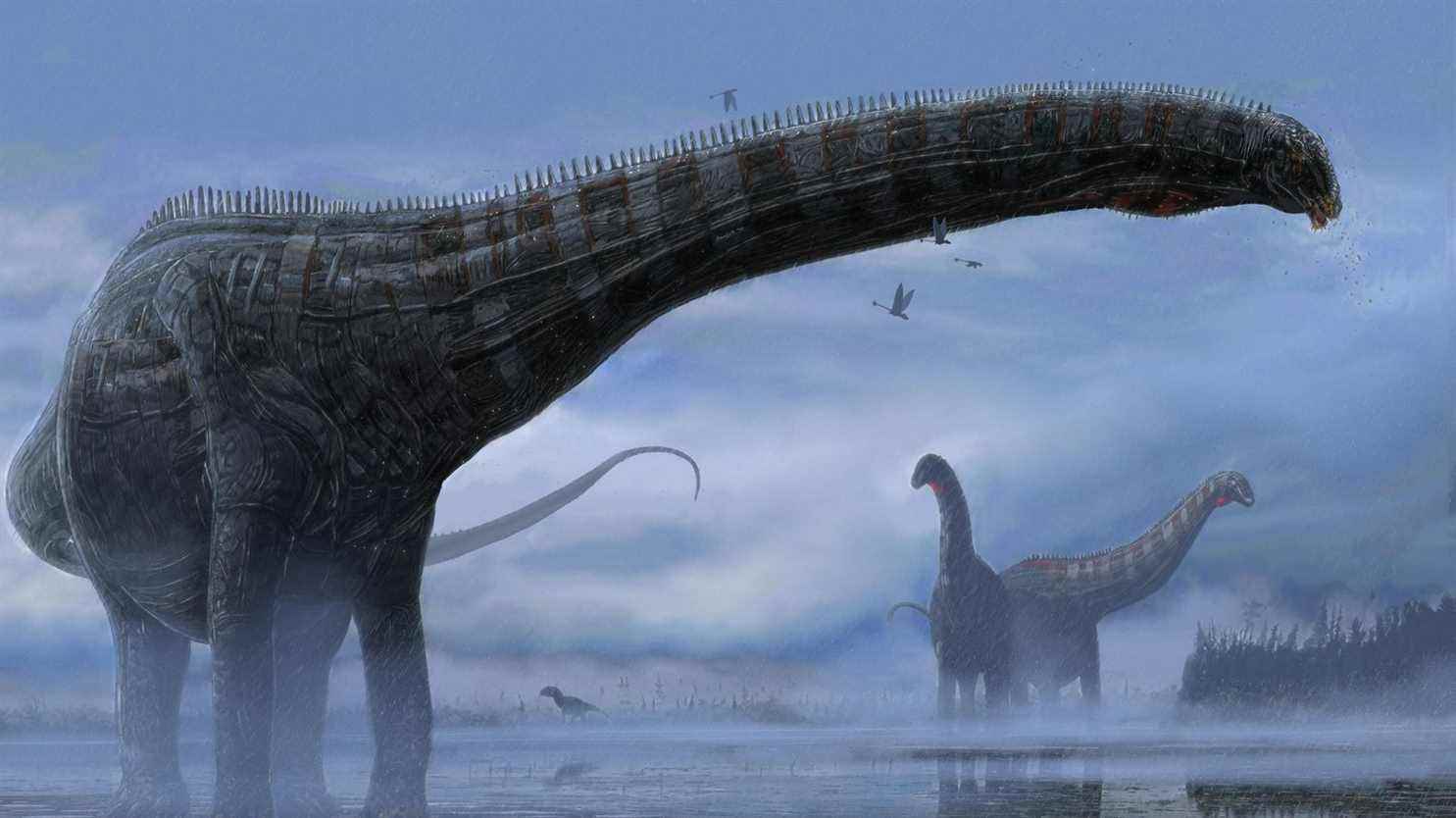It was therefore in the boreal spring that the fall of the giant asteroid responsible about 66 million years ago for the extinction of the dinosaurs and a large part of the planet’s species would have occurred, according to a study unveiled on Wednesday. February 23. The determination of this season is important to help understand “how the survivors survived and then thrived“, explained its main author, Mélanie During, during a press briefing.
We will never know, on such a time scale, the exact year of the event, which occurred in Chicxulub, on the current Yucatan Peninsula, in Mexico. The impact of the asteroid, or perhaps a piece of a comet according to another recent study, caused a series of disasters followed by climatic upheaval. They marked the end of the Cretaceous era and that of its masters on land, the non-avian dinosaurs, and in the air, the pterosaurs, flying reptiles.
The team led by paleontologist and doctoral student Mélanie During and vertebrate specialist Dennis Voeten, both at the Swedish University of Uppsala, sheds key light on the event with the study of fish fossils. The site of Tanis, in the current American state of North Dakota, has kept the memory of this apocalypse. It brings together a population of fossilized species, the majority of which have been buried under the deposits of the “seiche”, a kind of tidal wave, reports the study.
In this phenomenon, the shock waves of the earthquake traveled more than 3,000 km in a few tens of minutes, and raised the waters of an inland sea which then crossed present-day America, carrying away all life in their path.
At Tanis, scientists studied the remains of three sturgeons and three paddlefish, using in particular high-resolution X-ray tomographic analysis from the Grenoble European Synchrotron (ESRF). They first established that the fish had indeed perished in the seiche episode, which was accompanied by a rain of glass spherules, a veritable deluge of sand vitrified by the heat of the impact and projected into the air, before falling back to the ground for great distances.

The fish are dead”within 15 to 30 minutes” after the impact, according to Mélanie During. The proof, they had time to ingest enough water for the ESRF device to identify spherules in their gills, but not enough to transport them to their digestive tracts.At the ESRF, a microscopic study of the bone formation of the fossils then made it possible to determine that this formation, which takes place in an annual growth cycle, was in the first stage of a new cycle.
“The bone cells were relatively small, but they were just beginning to grow again, coinciding with spring“, explained Dennis Voeten, during the press briefing. A finding confirmed by the analysis of the concentration in the bones of an isotope of the carbon molecule, which rises according to the richness of the diet in plankton, also seasonal.”The fish died in the spring and the reign of the dinosaurs ended in the spring“, concludes Mélanie During.
The impact, with a power equivalent to at least several tens of billions of atomic bombs from Hiroshima, had consequences for the entire planet. Immediate, with the annihilation of all nearby life and huge fires at great distances. And in the longer term, by inflicting a “nuclear” winter for years: the massive ejection of sulfur and dust formed aerosols in the atmosphere which caused acid rain and blocked the rays of the Sun, thus reducing the photosynthesis.
Plant dieback starved herbivores, like the large sauropod dinosaurs. Scientists assume that the disaster hit the fauna of the northern hemisphere more severely, in the full spring phase of reproduction and growth, than that of the south, which entered a phase of rest and hibernation with the fall for certain species. .
The event caused a “selective extinction”, according to Mélanie During, who imagines that “to survive the nuclear winter you first had to survive the impact, and that the chances were greater for those who could hibernateThe study notes in this regard that ecosystems in the Southern Hemisphere recovered from the disaster faster than those in the North.
